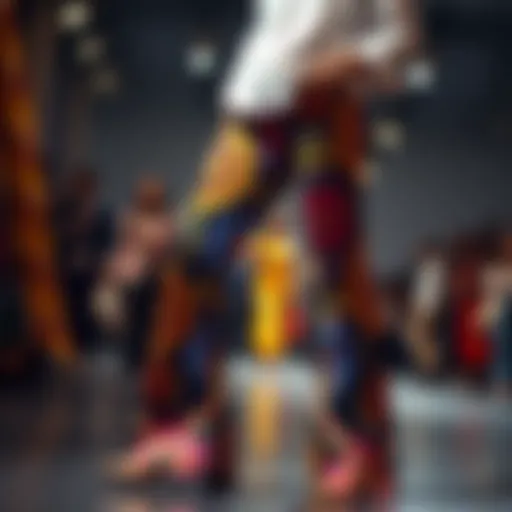The Evolution and Significance of Women's Dress Hats
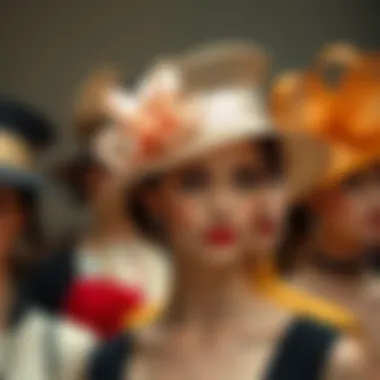
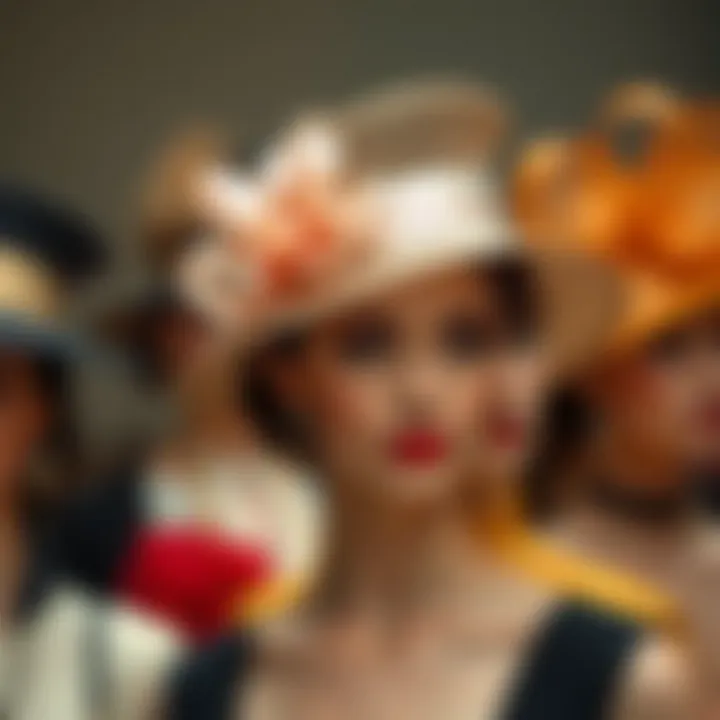
Intro
Women’s dress hats carry a legacy that stretches through time, weaving together threads of fashion, identity, and social discourse. These accessories, often viewed through a modern lens as mere embellishments, are in fact rich in history and cultural significance. From the wide-brimmed bonnets of rural life to the sophisticated cloches of the 1920s, hats have reflected not just trends but the very status and spirit of the times. In this article, we will explore their evolution, tracing how designs and styles morphed in tandem with shifts in women’s roles in society. We will also discuss practical recommendations for incorporating these timeless pieces into contemporary wardrobes, illustrating how a well-chosen hat can elevate both fashion and personal expression.
Fashion Tips
Styling Techniques
Integrating a dress hat into your outfit requires a little finesse but can remarkably transform your look. Here are a few tips to consider:
- Balance Proportions: If your hat is wide-brimmed, opt for slimmer silhouettes in the rest of your outfit. Conversely, a smaller hat can be paired with more voluminous clothing, preventing the ensemble from seeming too top-heavy.
- Color Coordination: Choose a hat that complements your attire rather than just matching it. A bold color or pattern can accentuate a neutral outfit, creating a statement piece.
- Layering Wisely: Hats are great for layering outfits. For example, consider teaming a fedora with a structured blazer for a polished look, or a floppy hat with a flowing sundress for something more whimsical.
- Accessories Coordination: Don't shy away from matching your hat with other accessories like scarves or jewelry. For instance, a vintage hat can pair quite well with retro earrings, making your overall look cohesive.
Must-Have Accessories
When it comes to enhancing the effectiveness of your dress hats, a few select accessories can be invaluable:
- Hatinators: These hats are basically a fusion of hat and fascinator, offering versatility that can work for less formal occasions.
- Hairpieces: A stylish hairpin or clip can add a sophisticated touch when worn with a hat. This is particularly effective for events where one wants to show off a polished look but still wear a hat.
- Statement Bags: A chic handbag can elevate your entire look when paired with a dress hat. Look for unique textures or stylish prints that either contrast or complement the hat.
Integrating a dress hat into your outfit is not just about style; it’s also an opportunity to showcase individuality and personal flair in fashion.
Outfit Inspiration
Seasonal Outfit Ideas
The beauty of dress hats is that they can be styled for every season. Here are some seasonal outfit ideas:
- Spring: Light fabrics are your friends! Consider a pastel sunhat paired with a flowy maxi dress. Add a light cardigan for chillier days.
- Summer: A straw hat goes perfectly with a bathing suit or casual shorts. This look is both breezy and functional.
- Fall: Try a wool fedora over a turtleneck and tailored trousers. Not only do you stay warm, but it boasts a professional yet fashionable vibe.
- Winter: A felt hat with a wide brim can complement a chic winter coat beautifully, striking that perfect balance between function and flair.
Versatile Wardrobe Essentials
To fully embrace the world of dress hats, consider these wardrobe essentials:
- Turtlenecks: Perfect for layering under hats during the colder months.
- Tailored Blazers: These can easily dress up a casual outfit, ideal for wearing alongside structured hats.
- Classic Boots: Whether ankle or knee-high, boots can ground your overall look and add a touch of sophistication.
Finally, as we speak about the evolution of women's dress hats, it's clear that these accessories are more than just fashion items; they're a reflection of self and society, standing the test of time amidst changing trends. For more insights, you can visit Wikipedia, Britannica, or browse Reddit for community discussions.
Prolusion to Women's Dress Hats
The world of fashion is a tapestry woven with threads of history, culture, and personal expression. Among these threads lies the chapter dedicated to women's dress hats, an accessory that has journeyed through time, reflecting shifts in societal values, elegance, and identity. Understanding women's dress hats is more than just looking at them as mere accessories; it is about recognizing their role as powerful signifiers of femininity and social stature.
Defining Dress Hats
Dress hats, in simplest terms, are decorative headwear worn primarily by women for formal or semi-formal occasions. However, these hats are more than just utilitarian items. They can range from the grand and embellished styles meant for special events to more understated pieces, serving various functions in a woman’s wardrobe. Historically, a woman’s dress hat could signal many things — her marital status, social class, or even her political allegiance. As fashion designers and stylists know all too well, the shape, material, and embellishment of a hat can transform an outfit from ordinary to extraordinary.
While defining dress hats, one must also consider the cultural context that accompanies them. In some societies, hats are integral to traditional attire, symbolizing heritage and continuity. This multifaceted nature of hats pushes us to contemplate their evolving significance in contemporary fashion.
The Role of Dress Hats in Fashion
Hats serve as a canvas for creativity, reflecting trends, emotions, and even the zeitgeist of their times. When we look at the role of dress hats in fashion, we see that these items often emerge as statements rather than mere complements to an outfit.
Dress hats can command attention, acting as conversation starters and artful expressions of individuality. Moreover, they can enhance the wearer’s style, adding layers of sophistication or whimsy, depending on the look desired. For instance, a wide-brimmed straw hat offers sun protection while exuding an air of casual elegance, suitable for garden parties and seaside strolls. On the other hand, a feathery fascinator can elevate a simple dress to haute couture status at events like the Royal Ascot.
Hats also allow for self-expression. The selection of a particular style can articulate a woman’s mood, creativity, and personal brand, making the hat not just an accessory but a vital part of one’s identity. By bridging the gap between historical significance and contemporary relevance, dress hats maintain their allure and charisma in the bustling world of fashion.
Ultimately, the elegance of women's dress hats is embedded in their history, evolution, and the emotional narratives they weave. Engaging with this topic not only informs our fashion sense but reminds us of the roles these hats have played — and continue to play — in shaping cultural identity and fashion narratives.
Historical Perspective
Understanding the historical perspective of women's dress hats provides valuable insights into not just fashion, but social dynamics and cultural shifts over centuries. These hats have often been more than mere accessories; they have reflected societal values, aspirations, and the evolution of women's roles throughout time. By exploring the origins, significant eras, and transitions of these hats, we can appreciate their importance not only in haute couture but in the broader context of women's history.
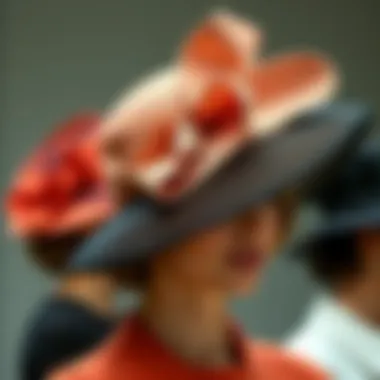

Origins in Feminine Fashion
Women’s dress hats trace their lineage back to the early days of civilization, where modesty and social status dictated women’s attire. The earliest versions were simple cloth coverings, often tied under the chin, serving both practical and symbolic purposes. These early hats were generally functional, protecting women from the sun and elements while also denoting social rank.
As we moved through the Middle Ages, head coverings began to morph, taking on more ornate designs as women sought to showcase wealth and personal style. By the time of the Renaissance, hats became luxurious, often embellished with jewels and feathers. Popularity grew, not just for function, but also as a declaration of identity and class. These headpieces were often the centerpiece around which women's outfits revolved, and the public’s perceptions of a woman's worth began to be influenced significantly by her choice of headdress.
The 19th Century and Victorian Influence
The Victorian era heralded a dramatic transformation in women's dress hats, echoing larger societal changes. Hats in this period were often elaborate, with wide brims and intricate embellishments such as ribbons, flowers, and even lace. These hats reflected the strict societal norms that dictated women's behavior, emphasizing femininity and propriety.
During these times, women of the upper classes found the hat became a symbol of their social standing. As such, hats were worn not only to complete an outfit but also to signify a woman’s place in the observable social hierarchy. In gatherings, such as garden parties or balls, the hat was essential, setting the tone for social interaction. Importantly, the development of millinery as a craft also flourished, paving the way for the rise of specialized hatmakers whose designs were sometimes met with as much intrigue as the couture garments themselves.
Evolution through the 20th Century
With the arrival of the 20th century, the landscape of women’s dress hats began a pivotal shift. The First World War significantly impacted fashion, as women stepped into roles previously filled by men. As women became more active in the workforce, hats began reflecting this newfound independence. The designs became more practical, lending to a more utilitarian aesthetic that still allowed for personal expression.
By the 1920s, flappers emerged as icons of a new era, wearing hats that illustrated liberation and modernity. Styles like cloche hats took center stage, emphasizing simplicity and elegance. As decades passed, hats fluctuated in popularity but continued to signify key cultural movements.
The latter part of the century saw the introduction of famous styles, from the sleek and minimalist shapes of the 1960s to the bold and extravagant designs of the 1980s. Even as fashion evolved, the hat remained a staple, transforming alongside women’s roles in both the workplace and at home.
The historical trajectory of women’s dress hats highlights an essential narrative of empowerment and identity, reflecting the ongoing struggles and successes of women over the years. Their continual reinvention demonstrates how fashion can mirror social progress, making it pertinent for contemporary discourse in fashion and culture.
"Fashion is like a time capsule of culture; it tells us who we were and who we are."
Styles of Women's Dress Hats
When it comes to women's dress hats, style plays an undeniable role in personal expression and cultural identity. These hats are more than just accessories; they are statements of taste, professionalism, and sometimes rebellion. Understanding the variety of styles available can provide insight into not just individual preference but also broader social narratives. This section will dissect key types of hats and the materials they're crafted from, underscoring their significance in modern fashion while considering functionality and aesthetic value.
Types of Dress Hats
Wide-brimmed Hats
Wide-brimmed hats are often associated with elegance and sophistication. Their distinctive feature is, of course, the ample brim which can range from several inches to a foot wide. The elegance they exude makes them a favorite for formal events, particularly outdoor weddings or garden parties. The wide brim provides much-needed shade and protection from the sun, thus adding to its practicality. The beauty of this style is that it effortlessly elevates any outfit, whether it be a summer dress or a tailored suit, giving an air of sophistication and timeless charm. However, one must be cautious, as the size can sometimes overwhelm petite frames, making it crucial to strike a balance.
Fascinators
Fascinators often provoke a sense of curiosity. These small, decorative headpieces can be simple or extravagant, often adorned with feathers, flowers, or netting. Their appeal comes from versatility—they can be styled to fit various occasions, from formal events to casual brunches. Unlike traditional hats, fascinators are typically worn at an angle, contributing to their whimsical nature. However, they might not provide much protection from the elements, making them more of an aesthetic accessory than a practical one. The beauty of a fascinator lies in its ability to add a splash of creativity and personal flair to any outfit.
Cloche Hats
Cloche hats pulled the spotlight in the 1920s and continue to hold relevance today. Characterized by their close-fitting shape that hugs the head and their downward sloping brim, they were emblematic of the flapper era, signifying a liberation from outdated societal norms. Cloche hats often feature rich fabrics, and unlike other styles, they provide some warmth, making them a suitable option for cooler seasons. Their unique silhouette tends to complement oval and round face shapes, adding a vintage-inspired elegance to modern wardrobes. One downside is that they may not accommodate all hairstyles, limiting your styling options a bit.
Bonnets
Bonnets, though often associated with pastoral beauty and innocence, are making a comeback, especially in vintage-inspired fashion circles. Traditionally tied under the chin with ribbons, they come in soft fabrics and can be quite romantic. Bonnets can add an endearing quality to an outfit, bringing a sense of nostalgia. However, they tend to be less versatile than other styles, primarily suited for specific occasions like tea parties or themed events. While not every hat can pull off the charm of a bonnet, those who seek a whimsical touch may find this style appealing.
Material Variations
Wool and Felt
Wool and felt hats are particularly favored during the colder months. The warmth they provide is unmatched, with felt often used for its durability and soft texture. These materials allow for various styles, from cozy beanies to elegant fedoras. The key characteristic is that both wool and felt hold their shape well, ensuring longevity. Despite being slightly heavier, the benefits of insulation and classic appeal make them a great choice for winter fashion. However, care must be taken with cleaning, as they can be more susceptible to damage from water.
Straw and Natural Fibers
Straw and natural fibers are essentials of summer fashion. Hats crafted from these materials are lightweight and breathable, ideal for shielding the wearer from the sun's harsh rays. Often found in wide-brimmed styles, these types of hats bring a laid-back elegance to beach outings or picnics. They often exhibit unique textures that can add character to any outfit. Yet, they might lack durability; exposure to moisture can warp their shapes, making them less suitable for wet conditions.
Silk and Synthetics
Silk and synthetic materials have carved a niche in the hat-making industry due to their adaptability. Silk adds a level of luxury, often seen in high-end fascinators or embellished cloches, while synthetics offer affordability, varied patterns, and lighter weight. The primary advantage here is versatility; these materials can be dyed into countless shades and designs, meeting various consumer tastes. However, the downfalls include the potential lack of breathability in synthetic options and fragility in silk, requiring mindful care to maintain their luster and shape.
With understanding and appreciation for the diversity in styles and materials, individuals can tailor their hat choices to reflect their personal style and suit various occasions effectively. This exploration of women's dress hats paves the way for a deeper conversation about their cultural significance and practical application in today's fashion landscape.
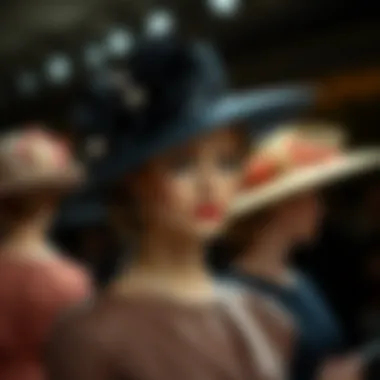
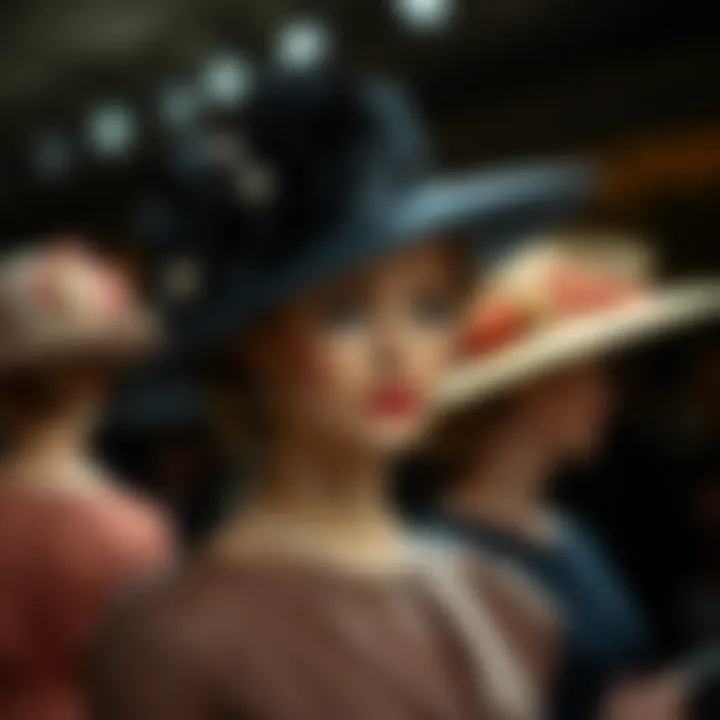
Cultural Significance of Dress Hats
Examining the cultural significance of dress hats reveals how these accessories have transcended mere fashion status to become symbols of identity, empowerment, and social commentary. Throughout history, hats have played pivotal roles in representing class, status, and gender expectations. Moreover, they often serve as powerful tools for individual expression. In today's world, understanding this cultural backdrop is crucial for both designers creating modern pieces and retailers considering the market demands.
Hats as Statements of Identity
Hats, when worn, can convey messages without uttering a word. For some, a bold fascinator at a wedding speaks volumes, showcasing not only style but personal taste and confidence. From the flamboyant hats seen at the Kentucky Derby to the intricate designs adorning royal weddings, these accessories are more than fashion statements; they are reflections of individuality. The choice of a hat can represent a wearer’s cultural background, societal status, or a distinct fashion philosophy.
Consider the wide-brimmed hat adorned with colorful ribbons. To many, it might shout the essence of summer, but to others, it may symbolize a specific cultural heritage or a commitment to sustainable fashion practices. Hats can function as visual storytelling devices, where each style and color encapsulates a rich history.
For example, during the 1920s, cloche hats emerged as a statement of liberation for women as they stepped into new social roles. They showed that women were not just participants in fashion but leaders of change, and the hats they donned were pivotal to that narrative. Hats have been utilized as political statements, representing movements like women’s suffrage, where wearing a particular style signaled solidarity and purpose.
"A hat can transform a person’s appearance, but more profoundly, it can elevate their identity."
Hats in Social Movements
The power of hats extends beyond mere aesthetics and into the arena of social change. During various social movements, hats have often served as symbols of resistance, solidarity, and empowerment. The Women's March in recent years showcased pink pussy hats as a powerful statement against gender inequality and social injustice. These knitted hats united thousands of people, reinforcing the idea that clothing could carry significant political weight.
In earlier times, it was not uncommon for hats to play prominent roles in protests. For instance, the iconic black beret linked to the Black Panther Party serves as a reminder of the cultural and political rebellion during the 1960s. Here, such headwear encapsulated pride and resistance, enhancing the identity of the wearer while delivering a potent message to the world.
Cultural movements have often been accompanied by unique styles of hats, serving as silent yet deafening proclamations of unity among participants. From the wide-brimmed fedora defining the jazz age to the bohemian styles seen during the peace movement, hats have continuously shaped and communicated the ethos of their time.
As we look at the evolution of women’s dress hats, it’s evident that they are not just accessories but powerful cultural markers that intertwine fashion with identity and social standing. Understanding their significance encourages a deeper appreciation for how the seemingly simple act of donning a hat can contribute to broader societal narratives.
Incorporating Dress Hats into Your Wardrobe
When it comes to fashion, the right accessory can tie an outfit together like icing on a cake. Dress hats are no exception. They possess the unique ability to add charm and personality to even the most basic attire. Understanding how to effectively incorporate them into one's wardrobe can elevate not just the overall look but also the wearer's confidence. In discussing this aspect, we recognize the multifaceted benefits of adding hats - they offer a touch of sophistication and practical sun protection while showcasing individual style.
Choosing the Right Style
Choosing the appropriate style of dress hat is much like selecting a fine wine for a meal; it requires careful consideration. Each style serves a purpose and complements various looks.
Face Shape Considerations
Face shape is a key component in selecting the best hat style. Just as dresses come in cuts that flatter different body shapes, hats also come in forms that accentuate a person’s facial features. For instance, individuals with oval-shaped faces typically have more flexibility in their choice of hats—wide-brimmed numbers or fitted cloches can both look striking. Conversely, those with round faces might benefit from hats with higher crowns and asymmetrical brims, creating the illusion of length and balance.
The key characteristic of understanding face shape is its focus on achieving harmony in one’s appearance, making this knowledge a valuable asset for anyone serious about fashion.
Dressing for the Occasion
Knowing how to dress for the occasion is where hat-wearing can become an art form. A garden party might call for a floppy sun hat adorned with vibrant ribbons, while a formal event like a wedding can necessitate something more structured like a fascinator or a sinamay hat. Understanding the nuances of these distinctions can keep one from feeling out of place.
Each occasion presents a chance to express not just style but also respect towards the event’s tone. This is evident in the subtleties of how the right hat can align with the overall ambiance. Wearing something appropriate signals consideration for the gathering at hand, which is a powerful form of non-verbal communication.
Caring for Your Dress Hat
Not only is selecting a dress hat essential, but caring for it is just as important to maintain its allure. These accessories can be quite an investment, both emotionally and financially. Proper care can prolong the life of a hat and keep its form intact.
Storage Tips
When it comes to storage, keeping a hat in an upright position is crucial. Many suggest using hat boxes to prevent flattening or misshaping. For those without dedicated storage, placing a clean, soft cloth over it in a drawer can offer protection from dust.
A well-kept hat can transition through various seasons and occasions seamlessly. The key characteristic of diligent storage lies in its ability to sustain the hat's structure over time, allowing it to age gracefully and remain a relevant part of a wardrobe.
Cleaning Techniques
Cleaning techniques also play a crucial role. While some hats can be spot-cleaned, others may require more delicate handling. For example, wool and felt hats benefit from occasional brushing, while straw hats may need a gentle wipe with a damp cloth. It’s important to follow the manufacturer’s care instructions, as neglect can lead to irreparable damage.
Success in maintaining these details elevates a dress hat from a mere accessory to a cherished piece of wardrobe history. Regular care showcases a mindset that values craftsmanship and personal style, allowing the hat to stand the test of time.


In a world where individuality takes center stage, dress hats serve as a canvas for self-expression, wrapping the wearer in layers of history, function, and flair. So, as you delve into the world of dress hats, remember to keep your personal style at the helm of your choices.
Occasions for Wearing Dress Hats
Dress hats have long been emblematic of elegance and sophistication. They hold a unique place in the fashion ecosystem, making them more than just mere accessories. Understanding the various occasions for wearing dress hats allows one to appreciate their significance and how they transform an outfit. Whether it be to portray formality, enhance casual attire, or celebrate seasonal festivities, hats add layers of personality and flair to personal style. Highlighting this element not only caters to fashion designers and stylists but also enlightens retailers, bloggers, and marketers on how to position these products effectively.
Formal Events
Events that radiate formality, like weddings, galas, and charity balls, provide the perfect backdrop for donning an exquisite dress hat. These gatherings are often rich in tradition, making the presence of a hat not just a fashion statement but rather an expected adornment. In many cultures, hats at formal occasions also reflect respect and sartorial elegance.
Components to consider:
- Style and Type: A wide-brimmed hat or a fascinator can uphold a sophisticated aura. Colors should typically align with the formality of the event.
- Material: Luxurious fabrics like silk or wool felt elevate the ensemble and imply a certain status.
- Complementing Attire: The hat should harmonize with the outfit. A neatly tailored suit or an elegant dress can be enhanced by selecting the appropriate hat.
Wearing a hat to a formal event also serves as a conversation starter, offering an opportunity to showcase one's taste and appreciation for fashion.
Casual Outings
While dress hats are often associated with formal settings, they can equally flourish in more laid-back atmospheres. Casual outings, such as brunch with friends, vineyard picnics, or leisurely walks in the park, create an ideal opportunity to express individual style through hats.
Key considerations include:
- Versatility: A cloche or a straw hat can add a playful touch to casual wear, such as sundresses or stylish jeans and a top.
- Functionality: Hats can offer functional benefits such as sun protection, adding practicality to style.
- Personal Touch: Choosing a hat with distinctive features, like bold colors or unique designs, reflects personal flair.
Through these casual occasions, women can easily integrate hats into their everyday wardrobe, therefore making a statement without the need for extravagant adornments.
Seasonal Gatherings
As seasons change, so do the occasions that call for hats. Special events tied to specific times of the year offer tremendous potential for showcasing seasonal styles. From summer garden parties to winter holidays, hats emerge as tailored accessories that celebrate the season.
Considerations to embrace:
- Seasonal Materials: Lightweight, breathable fabrics like straw for summer, and heavier felt or wool for winter are essential in picking the right hat.
- Appropriate Styles: Consider the event and season; for instance, a floral wide-brim for spring or a charcoal wool cloche for winter gatherings.
- Cultural Relevance: Many cultures have seasonal traditions tied to hat-wearing, such as Easter bonnets or festive winter hats, which enhance the cultural fabric of the event.
A well-selected hat for these seasonal gatherings not only elevates style but also aligns with the emotional and cultural resonance of the occasion.
"A hat isn’t just an accessory; it’s a profound connection to fashion's past and a statement of who we are today."
As the occasions for wearing dress hats range from formal to seasonal, each presents an opportunity to integrate a touch of elegance into personal style. Recognizing these occasions helps in curating a wardrobe that speaks to one’s identity and appreciation for fashion.
For more insights about the significance of dress hats, explore resources such as Britannica, or read discussions on platforms like Reddit.
The Future of Women's Dress Hats
The journey of women’s dress hats is far from over. As we look down the road, the continued evolution of these accessories is crucial for understanding how personal style and fashion intertwine. Within contemporary society, women’s hats have transitioned from status symbols to versatile fashion statements that resonate with individual identity and social values.
Current Trends
Today, the landscape of women’s dress hats reflects a myriad of influences that capture both nostalgia and modernity. Wide-brimmed hats are on the rise, showcasing elegance while providing protection from the sun. Their boldness echoes a return to classic styles, adorned with embellishments like feathers and ribbons, mimicking the glamour of past eras. Additionally, fascinators have regained popularity, often spotted at formal gatherings, making a statement with their vibrancy and creative designs.
Moreover, social media platforms are changing the game. Influencers are integrating hats into everyday wears, challenging old perceptions about when and how these accessories should be worn. In casual settings, hats are paired with athleisure looks, transforming an otherwise standard ensemble into something with a twist of chic. The demands of modern fashion call for versatility, encouraging women to mix and match dress hats with diverse outfits, fueling a fresh perspective on accessorizing.
- Bold wide-brimmed hats featuring vibrant colors.
- Creative fascinators adorned with unique designs.
- Everyday styles that incorporate hats into casual attire.
"Fashion is what you buy; style is what you do with it." – Anonymous
Sustainability in Fashion Accessories
As sustainability continues to gain traction across all facets of fashion, women's dress hats are not exempt from this vital conversation. Consumers are becoming more discerning, prioritizing quality over quantity, and seeking pieces that are both stylish and environmentally friendly. Many brands are now producing hats from recycled materials or sustainably sourced goods, catering to an audience keen on making informed purchasing decisions.
The vintage market also plays a crucial role here, with thrift and resale shops becoming hotspots for unique finds. Purchasing second-hand hats not only reduces waste but encourages the idea that fashion can be timeless, with a story attached to each piece.
In this context, sustainability isn’t just a trend; it’s a movement that shapes the future of fashion. Retailers and designers are encouraged to adopt more eco-conscious practices, thus enriching the narrative around women’s dress hats in a way that underlines their value in both personal expression and environmental responsibility.
- Use of recycled materials in hat production.
- The rise of vintage and pre-owned hats in fashion circles.
- Encouraging consumers to consider the environmental impact of their wardrobe choices.
In summary, the future of women’s dress hats is being shaped by trends that value creativity, personality, and sustainability. In a world increasingly aware of its ecological footprint, the transition of these accessories into symbols of not just style, but also conscious consumerism, speaks to the broader narrative of fashion as an evolving art form.













